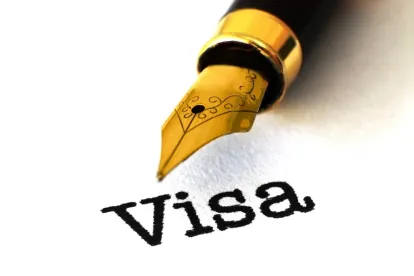Not unlike the stone heads of Easter Island, the disappearance of Amelia Earhart, and the number of licks required to reach the center of Tootsie Pop, the H-1B visa lottery remains an enigma to many.
A statutory cap limits annual approval of new H-1B visa petitions at 65,000, with an additional 20,000 available for individuals with U.S. Masters or higher degrees. The H-1B visa is often the only viable option for temporary employment of a professional worker. High demand coupled with a limited supply results in U.S. Citizenship & Immigration Services (USCIS) randomly selecting a total of 85,000 H-1B visa petitions received the first five (5) business days of April each year.
On Wednesday, June 27, 2018, the Office of the USCIS Ombudsman held a teleconference to discuss the H-1B visa lottery process and how USCIS processed the over 190,000 H-1B visa petitions received during the Fiscal Year 2019 filing period, which ran from April 2-6, 2018. During the teleconference, the Ombudsman’s office revealed some insights:
- Of the 190,098 cap-subject H-1B petitions received, 94,213 counted toward the regular cap and 95,885 counted toward the U.S. Master’s cap. While U.S. Master’s cap filings have steadily increased over the past five (5) years, overall filings have declined.
|
Fiscal Year (FY) |
Master’s Cap |
Regular Cap |
|
FY 2019 |
95,885 |
94,213 |
|
FY 2018 |
87,380 |
111,080 |
|
FY 2017 |
70,238 |
166,206 |
|
FY 2016 |
50,724 |
182,249 |
|
FY 2015 |
40,518 |
132,063 |
|
FY 2014 |
30,641 |
93,489 |
- The California and Vermont Service Centers each hire approximately 100 contract employees starting in February in preparation for H-1B cap season. What remains unclear is the type and extent of training these contract employees receive and what specific tasks they perform.
- Those petitions accepted into the lottery following initial review are assigned a random number.
- During initial review, petitions are rejected if they were filed too early, lacked the required filing fee, etc. However, the Ombudsman did not elaborate upon who conducts these reviews, what training those individuals possess, and whether any kind of quality assurance takes place.
- USCIS does not set a goal for completing data entry and returning petitions not selected in the lottery. It can, therefore, take several months to receive a rejected petition. For those petitions selected in the lottery, fees are normally deposited the first business day after data processing. If fees have not been cashed two (2) business days after USCIS announces data processing is complete, the petition may not have been accepted.
- Receipt notices do not specify whether a U.S. Master’s cap beneficiary was selected in the U.S. Master’s or regular lottery, but USCIS says it has a way to do so internally. Whether USCIS will make this information public remains to be seen
- Because not all H-1B petitions selected in the lottery will ultimately be approved, USCIS selects more than 85,000 petitions in the lottery. Because of the increase in number of denials in FY2018, the FY2019 projections were impacted:
|
Fiscal Year |
Master’s Cap |
Regular Cap |
|
2018 |
23,500 |
74,500 |
|
2019 |
27,100 |
85,900 |
FY2019 numbers also suggest that an increase in denials over last year may be expected.
As part of its rulemaking agenda, USCIS has proposed amending its regulations to establish an electronic registration program for petitions subject to numerical limitations for the H-1B nonimmigrant classification. The rule, first proposed in 2011, would allow USCIS to more efficiently manage the intake and lottery process for H-1B petitions. Whether it will come to fruition and what the process would be are still mysteries.
And, like the answer to the Tootsie Pop question, the world may never know.



 />i
/>i

